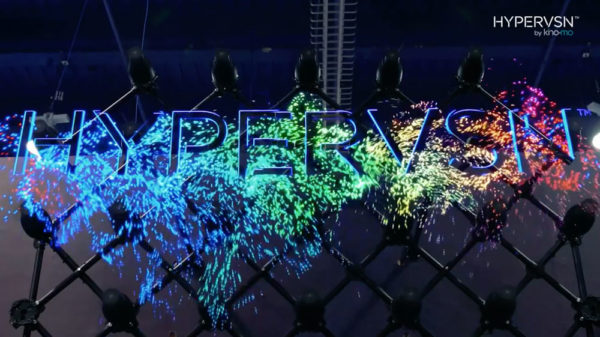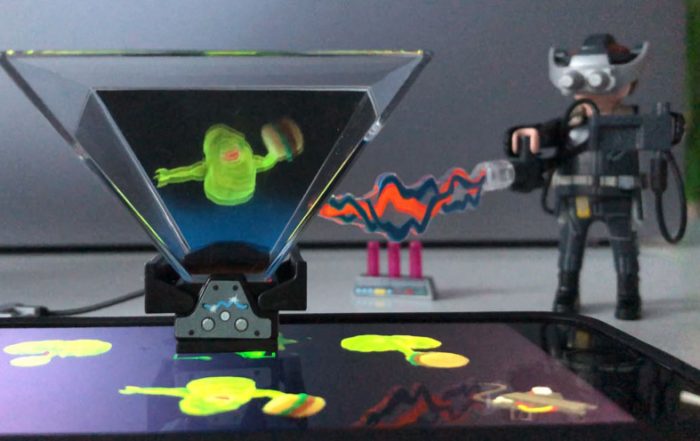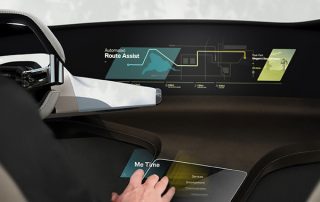Overview
Difference between virtual reality (VR) and augmented reality (AR)
Overview
Difference between virtual reality (VR) and augmented reality (AR)
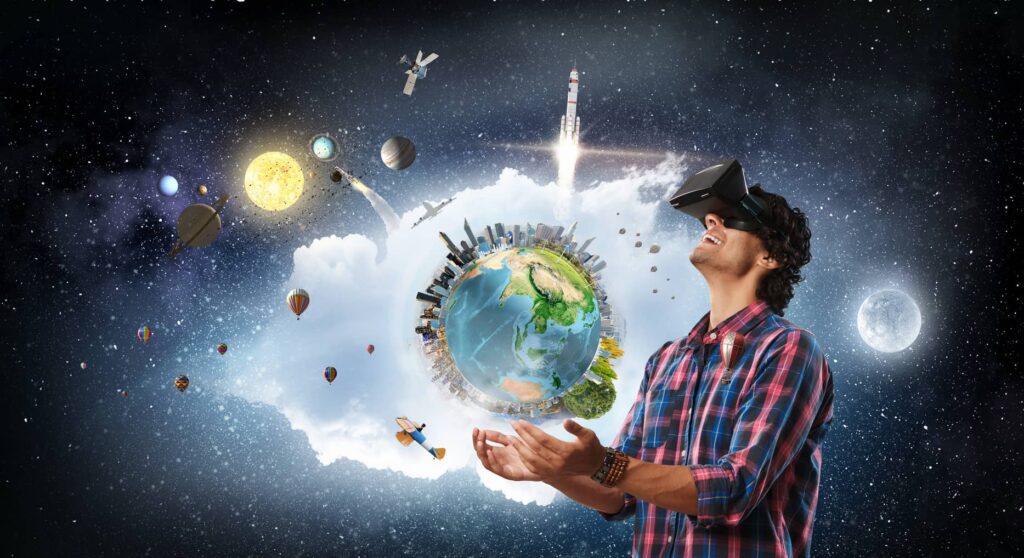
Difference between virtual reality (VR) and augmented reality (AR)
Both technologies – virtual reality (VR) and augmented reality (AR) – have developed enormously in recent years.
Thanks to faster, more powerful processors/computers, better graphics cards, sensors and cameras, faster internet connections and innovative possibilities in software development, countless new opportunities have opened up for VR and AR in the private and industrial sectors.
What is the difference between the two technologies?
To help you understand the difference between the two technologies, we have explained the difference between virtual reality and augmented reality in detail for all those who want to know more. difference between virtual reality and augmented reality in detail and for everyone else who likes it short and sweet, we have summarized the difference between VR and AR.
Difference between virtual reality and augmented reality
BRIEFLY SUMMARIZED
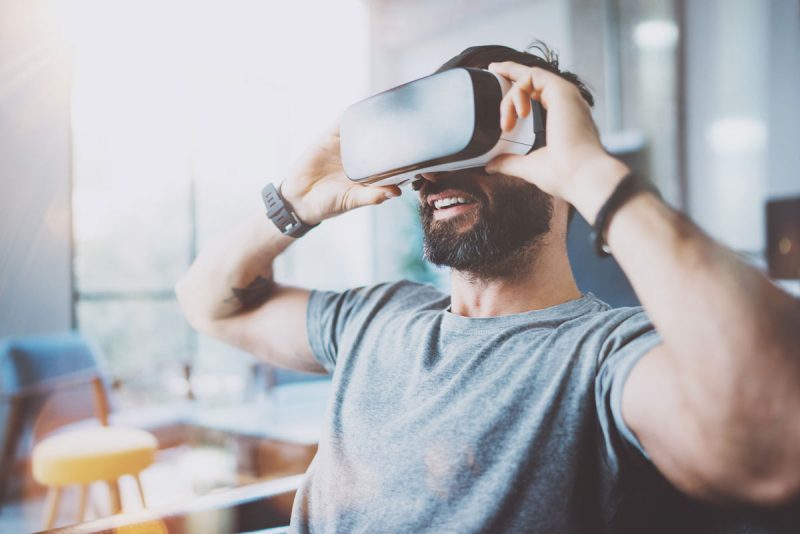
Virtual Reality (VR)
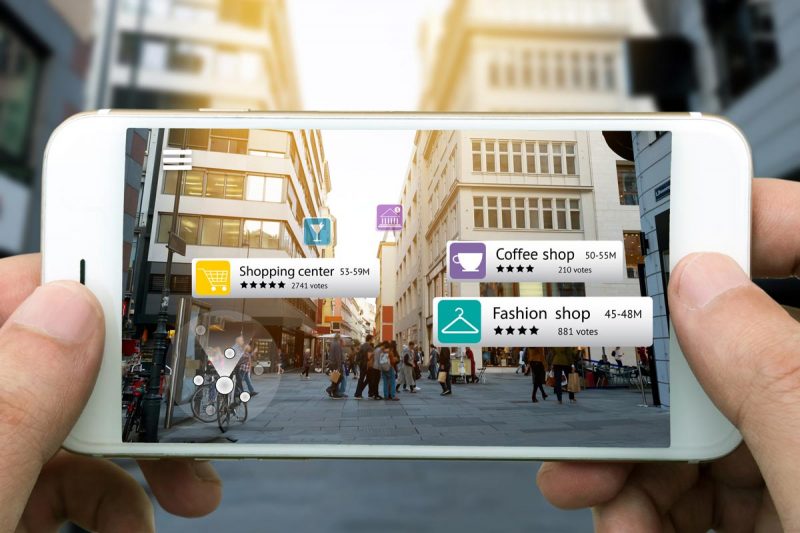
Augmented Reality (AR)
>
Difference between virtual reality (VR) and augmented reality (AR)
EXPLAINED IN DETAIL
For all those who would like to know more about the differences between virtual reality (VR) and augmented reality (AR), we have prepared the two areas in more detail below.
So here we go.
VR
Virtual reality means fully immersing yourself in a virtual world

Virtual reality (VR) enables users to experience a virtual 360-degree world, view it from all sides, move around in it and, in the best case, even interact with it.
IMPORTANT: The user is no longer aware of his real surroundings. Virtual reality makes it possible to experience simple things such as 360-degree images, 360-degree videos – which anyone can produce themselves – and complex applications such as virtual reality games or special virtual reality applications, e.g. for the automotive industry, medical technology, the tourism sector or new types of systems such as VR configurators.
360-degree panoramic images have already become VR classics.
360-degree images of cities, e.g. with Google Street View, or 360-degree images of real estate are now standard. This allows users to view their new apartment or house from home – without actually being there. Looking around in every direction, taking a closer look at certain points and even zooming in on them – no longer a challenge. The user has the feeling of being directly on site – this creates completely new possibilities in real estate marketing, for example, because the customer immediately builds up a much stronger emotional bond.
This is precisely the crucial difference between AR and VR.
With virtual reality (VR), the customer HAS the feeling of being on site; with augmented reality (AR), the user MUST be on site to find out more information.
360-degree videos are the next level of 360-degree images and make it possible to take a sightseeing tour of a distant city, attend a concert or do editorial reporting from distant countries from the comfort of your own home. The first movies are already being produced in 360 degrees. The user can experience the highlights – without having to be on location.
The new level of virtual reality is artificially created 3D worlds in which the user can immerse themselves completely.
VR Games
VR Games offer ever new possibilities.
Faster computers reproduce 3D worlds realistically and additional hardware such as VR gloves or controllers enable movement in the 3D world.
For example, you can climb mountains, fight historical battles, ride rollercoasters, steer spaceships or immerse yourself in dreamlike worlds. The special feature: The user not only sees and hears the 3D world – but also feels it.
Steht man auf einer Klippe erlebt man förmlich die Angst, den Abhang hinunter zu stürzen.
Auf der Achterbahn rutscht einem wahrlich das Herz in die Hose und unter Wasser hat man das Gefühl, als ob man schwebt.
Kurz gesagt: VR ist beieindruckend.
Aber richtig mitreden kann man erst, wenn man das erste Mal eine HTC VIVE oder OCULUS RIFT aufgezogen hat 🙂
VR applications for the industrial sector
VR applications for the industrial sector are becoming increasingly important.
The applications are always developed specifically for the needs of the respective companies.
Simulators for education and training purposes, therapeutic VR applications to conquer fears, VR product configurators for new cars, kitchens, smart home products, but also virtual presentations of new products as highlights at trade fairs, events and functions… the possibilities here are endless
Virtual reality is increasingly transforming from a gimmick into an industrial value-added tool.
For example training content can be taught better and fasterexpensive rents e.g. of retail space through better use of space reducedproducts marketed more emotionally and experience new prototypes without always having them built at the same cost.
CONCLUSION
Virtual reality will bring us much joy and amaze us in the coming years – if we are prepared to go down this innovative path.
AR
Augmented reality (AR) means that the real world is enriched with virtual content.

Augmented reality (AR for short) is a digital technology in which reality – i.e. everything you can see – is supplemented with additional information in the form of text, graphics, animations, videos, static or moving 3D objects.
IMPORTANT: The user perceives virtual elements in his real environment. Augmented reality brings books to life when they are scanned with a cell phone camera, allows city and tourist information on places of interest to be created in seemingly free space, offers great training opportunities for companies, enables interior design planning by allowing chairs and tables to be virtually placed in your own weekly room. In contrast to virtual reality, where VR glasses or a cardboard are required, smartphones, tablets, head-up displays, holography systems or augmented reality glasses, such as the Microsoft Hololense or Google Glasses, can be used for augmented reality– depending on the desired AR application. The world’s first DEEP FRAME augmented reality display was unveiled at CES 2018 in Las Vegas.
Augmented reality for navigation
Virtual objects and information are displayed to the user in such a way that they perceive both the real world and the virtual overlays at the same time. Examples of applications for augmented reality include navigation devices or head-up displays in cars, which guide the user to the desired destination and provide additional information such as traffic jam warnings, detours or building information in the field of vision on the way there – always depending on the current location.
Augmented reality gaming – good for the tourism sector
Cities and municipalities also provide valuable information for tourists. A well-known example from the gaming sector is the game “Pokemon Go”, which plays virtual objects, namely Pokemons, in many different places around the world. All players need is their own smartphone and they can collect virtual Pokemons in their real environment. The game has an important side effect: store operators or service providers can attract many potential customers to their locations by making virtual Pokemons available for collection.
The world’s first augmented reality display – Deep Frame
The first augmented reality display called Deep Frame was presented at the CES in Las Vegas.
This display works WITHOUT additional glasses and WITHOUT a tablet.
Thanks to a special lens, which is also used in space telescopes, the viewer simply looks through the lens of the Deep Frame and sees the virtual world.
As can be seen in the photo, visitors to the museum can see the virtual dinosaur walking around the exhibition space “live” through the window or lens.
This new technology is currently attracting a lot of attention as every visitor can see the virtual worlds without an additional device.
We will probably see this AR display in museums and showrooms as well as at trade fairs or high-end product presentations in the near future.
The augmented reality glasses – Microsoft Hololense
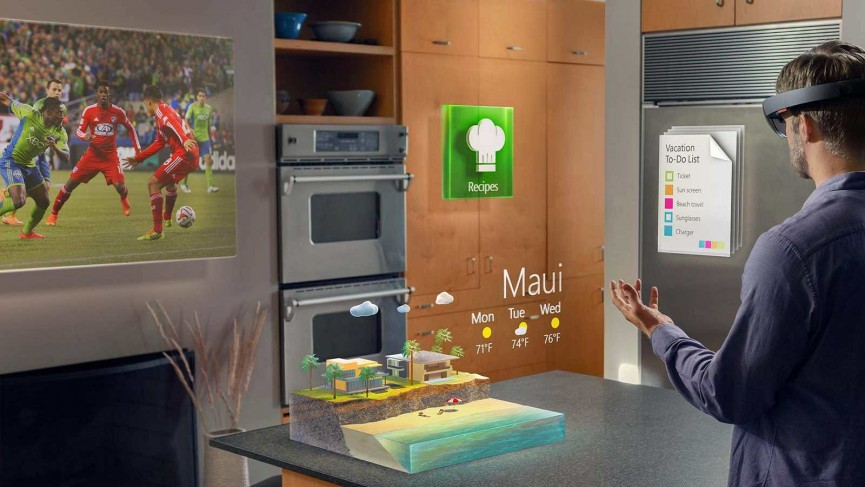
The latest augmented reality glasses are the Microsoft Hololens.
Users wear wireless glasses that work autonomously.
The user perceives the real world in its entirety and can interact with virtual objects via gesture control.
In the near future, wearers of inconspicuous mobile data glasses will also be provided with valuable information and apps in real time while they go about their everyday business or leisure activities.
CONCLUSION
Augmented reality made its breakthrough with private customers with Pokemon GO, while head-up technology is most widespread in the industrial environment.
A breakthrough is expected here with the new generations of AR glasses – which are even more powerful and offer more possibilities.
Other relevant articles
HYPERVSN hologram rotor.Everything you need to know summarized.
HYPERVSN hologram rotor. Everything you need to know summarized.
Playmobil hologram for kids – Playmogram 3D.Unboxing & Test.
Playmobil hologram for kids - Playmogram 3D. Unboxing & Test.
Difference between virtual reality (VR) and augmented reality (AR)
Difference between virtual reality (VR) and augmented reality (AR)
CES 2017.BWM brings HOLO operating concept into the car.HoloActive Touch
CES 2017 - HoloActive Touch. New HOLO operating concept from
Eyecatcher. Stand out uniquely. 7 tips and ideas
Eye-catcher. Stand out uniquely. 8 tips and ideas Create a
What are 3D renderings and how do they work?
1. How does rendering work? EVERYTHING

